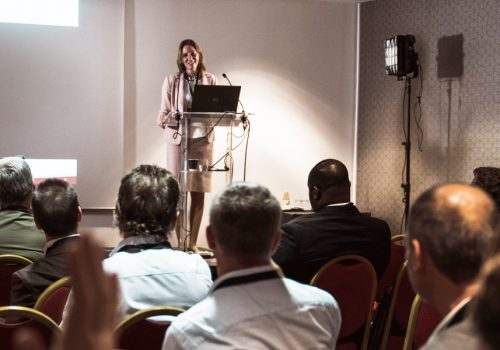When your team is faced with changes, challenges, or chaos, inspire them with a future-focused vision of shared success!
You may never encounter such traits in a job description for an executive position, but there are four key characteristics that followers want their leaders to have: compassion, stability, trust, and hope.
In a Gallup poll of more than 10,000 employees, the aforementioned traits were amongst the most cited ones. Nonetheless, when leaders are focused on reorganization and/or change, they do not necessarily practice these people-centric leadership qualities. As a result, employees are not fully engaged and become less productive. 69% of those who answered “yes” to the question whether managers and leaders made employees feel hopeful about the future, also scored high on the scale of engagement in their work. Only 1% of those who declared that their managers did not instill a sense of hopefulness about the future scored high on the scale of engagement in their work. What kind of employee would you prefer to have: disengaged and unproductive or engaged and hopeful?
- During my ongoing research on hope in the workplace with client companies around the world, I see a clear pattern emerging, highlighted by the following:
- Most professionals see hope as an essential element of leadership
- Some professionals feel that they intentionally feed hope in their workplace
- Few professionals believe that their organizations inspire hopefulness among their employees.

Certainly, leaders need to feed hope as they guide their teams toward a vivid picture of the future, understand precisely where they fit into it, and navigate change as seamlessly as possible. Here are some ideas to help you infuse hopefulness into your organizational culture:
Share your purpose. The why behind your team, division, or organization may be obvious to you, but do not assume everyone else gets it. Look at companies like Toms Shoes with its “One for One” program, whereby for every shoe purchase, a pair of shoes is donated to a child in need. Putting shoes on kids is a purpose anyone can get behind.
Paint a vivid picture of the future. Feeding hope is about looking toward a better future. Your employees need to understand where the organization is heading and what that means to them individually. Communicate the vision fully and frequently – through town hall meetings, internal newsletters, and one-on-one conversations – so that everyone is crystal clear on where you are headed.
Offer information appropriately. Information is the organizational life-blood on which decisions are made in every company. Honor people with your trust and willingness to provide them with facts. Except for confidential information that cannot be shared under any circumstance, pass information readily up and down the pipeline so as to help others make accurate and timely decisions.
Find the formal and informal change agents. Do not succumb to the notion that only the senior leadership team or HR can manage change. Find influential people at all levels of the organization who are respected and followed by others. Instill in them the hope about the future – as well as the realities of the business – and enlist their help in easing others through change.
Be open and transparent. Have a common language around your shared values and predetermined standards. Do not fall into corporatespeak or platitudes that would be better posted in the employee cafeteria or embroidered on a pillow. Instead, share real, honest, down-to-earth talk about what the company stands for and what is expected of employees.
Avoid micro-managing. Nothing makes employees lose hope and heart like being over-managed. Hire the right people, and then give them both challenges and choices. People who are charged with mastering new skills and taking ownership of projects get – and stay – engaged.
Warm up your emails. It is not so hard to say “magic words” such as please, thank you, and well done. Do not leave employees guessing, or worse, wondering about what they did wrong, when they get overly curt emails or texts from you.
Embrace your frontline. Do not forget about the heavy-duty people who are out front dealing with customers, clients, products and more. When you flip the conventional wisdom and think about leaders as working for their followers, and not the other way around, you are feeding hope. Recognize them with celebrations for big and small wins.
Know your people. This seems obvious but, believe me, it is not intuitive to everyone. Get to know your team, not just as workers (although that is as important), but most importantly, as human beings. You spend a lot of time with your co-workers, so take the time to discover their passions, their kids’ names, and their hopes and dreams for the future.
As a senior leader at Sony, Universal, and Turner Broadcasting, I have realized that it was not only working together, but also sharing personal triumphs and tragedies including illnesses, marriages, divorces, births and more that we came to truly trust and respect one another. Feed hope and people will follow you anywhere!









